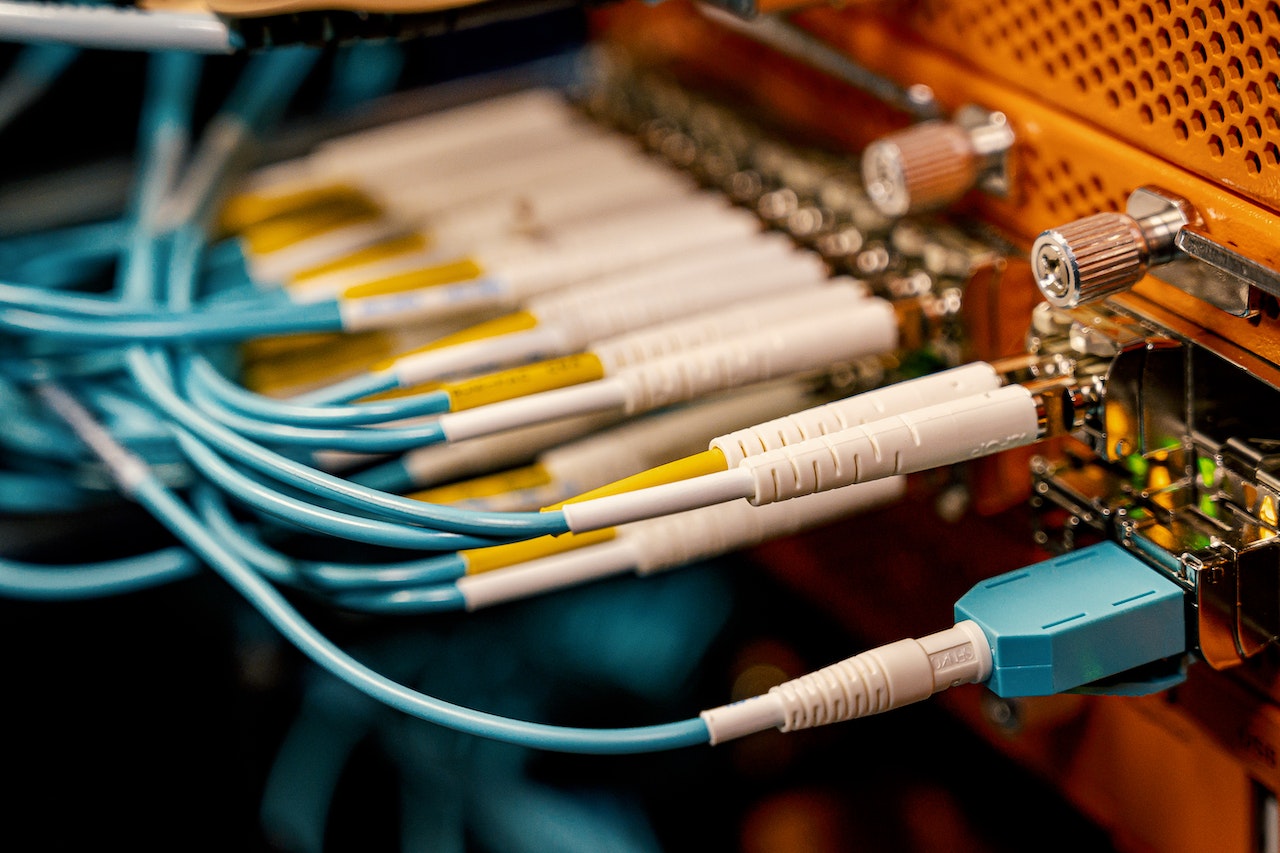We are making increasing demands on connectivity and the internet, both privately and professionally. Modern technologies such as cloud computing, IoT, and big data require high bandwidth – high availability of internet services – and networks that grow organically with the needs of businesses. Fiber optics can be the perfect solution for people and organizations looking for fast and reliable internet. Everyone has heard of the technology, even if they don’t have a fiber-optic connection yet. In this article, we explain exactly what fiber optics is and how the technology works in practice. We also discuss the different types of fiber optics and briefly highlight the benefits of this technology. Finally, we show how organizations can achieve high-quality fiber-optic connections.
An optical fiber is a wafer-thin fiber that is only 125 to 250 microns thick (approximately 0.125 to 0.25 millimeters and is thus barely thicker than a human hair). Unlike traditional copper internet cables, the fiber consists of two types of glass: a very thin core and a slightly thicker cladding. The two types of glass are fused together and, despite their minimal thickness, form an ironclad whole. The foundation for fiber-optic cable was laid back in the 1960s. In 1961, Elias Snitzer and Will Hicks noticed that dust particles in the open air impeded the passage of light. They then figured out that the best carrier for light would be a glass cable. The first usable fiber-optic cable was developed in 1970. Today, fiber optic technology is a lot more sophisticated, advanced, and powerful than the pioneers of the time could ever imagine.
The technology uses laser light to transmit digital information over the cable. The laser light acts as a carrier wave for digital data transport. Its bandwidth is determined by the optical transmitting and receiving equipment that is used. Light travels at lightning speed (much faster than electricity) and can effortlessly cover large distances without losing speed. The tiny cables are surrounded by optical material, so hardly any light, and therefore data, escapes before the signal reaches the receiver. So you can send data at incredible speeds. The technology behind fiber optics is very similar to Morse code. The data (video or audio files, emails, photos, text files, tables, spreadsheets) is converted into flashing light signals, just like Morse code signals transmit a message. The faster the fiber optic lasers flash, the faster the data is transferred.
Optical fibers are available in several different types. Want to get the most out of fiber optics? Then it’s important to know the purposes for which you want to use fiber optics and which type is best suited for that purpose. Do you want to transfer data over relatively short or really long distances? And how fast should the data be transferred? Does it have to be in real time and within just a few seconds, or does near real time and a somewhat wider time window also suffice? Within the fiber-optic arsenal, we distinguish between two main groups: single-mode and multimode.

Single-mode fiber is a fiber optic variant specifically tailored for data transmission over longer distances (up to about 40 km). Single-mode fiber has a tiny core diameter (5 to 10 microns) and transmits data over only one light beam. The maximum transfer rate is about one terabyte (as much as 1000 GB) per second. Signal transmission occurs at a wavelength of 1310 and/or 1550 nanometers.
Single-mode optical fibers can be divided into two types: OS1 and OS2. OS1 is tightly buffered, while OS2 has a loose-tube design. OS1 is now considered obsolete and rarely used, mainly because OS2 is superior to its predecessor in terms of speed, attenuation, and distance.
You can also opt for multimode optical fiber. This type of fiber-optic cable is ideal for transmitting digital signals over short distances (up to about 1100 meters). The transfer rate is slightly lower than single-mode fiber. However, the core diameter is larger (50-63 microns), so a multimode fiber provides a higher bandwidth than a single-mode fiber. This allows you to send more data simultaneously. Multimode fibers carry signals at wavelengths of 850 and/or 1300 nanometers.
Multimode optical fibers can be divided into five categories: O1 through O5. The higher numbers (O4 and O5) are more advanced than the lower ones (O1 through O3). They can transmit more data simultaneously over slightly greater distances at the same speed.
Internet over optical fiber is faster than any other connection. Optical fiber is already many times faster than the fastest copper connection (xDSL) and has the potential to become even faster. In test situations, speed records are constantly being broken. A staggering speed of 53.3 terabytes per second (53,300 GB/s) was achieved in a test environment in 2017, a figure that has since risen to 319 terabytes per second.
We don’t see these dizzying speeds yet in the “real world,” but decent progress is being made nonetheless. For example, the American space agency NASA, a pre-eminent high-tech organization, has to make do with “only” 400 GB per second. The fastest fiber-optic connections for private individuals can be found in parts of the US and Japan. These can handle about 10 GB per second.
In Belgium, 1 GB per second is pretty much the private ceiling, but most fiber-optic connections and subscriptions do not exceed 500 MB per second. Business internet via optical fiber is already available in Belgium at speeds of 10 GB per second. Tech experts expect fiber-optic connections for businesses and private individuals to rapidly gain speed outside of the test labs.

Home internet is convenient in that it provides immediate access to information

We are making increasing demands on connectivity and the internet, both privately and professionally.

Cyber-attacks are on the rise globally, with seriously negative implications for countries’ strategic, national, economic and social well-being.